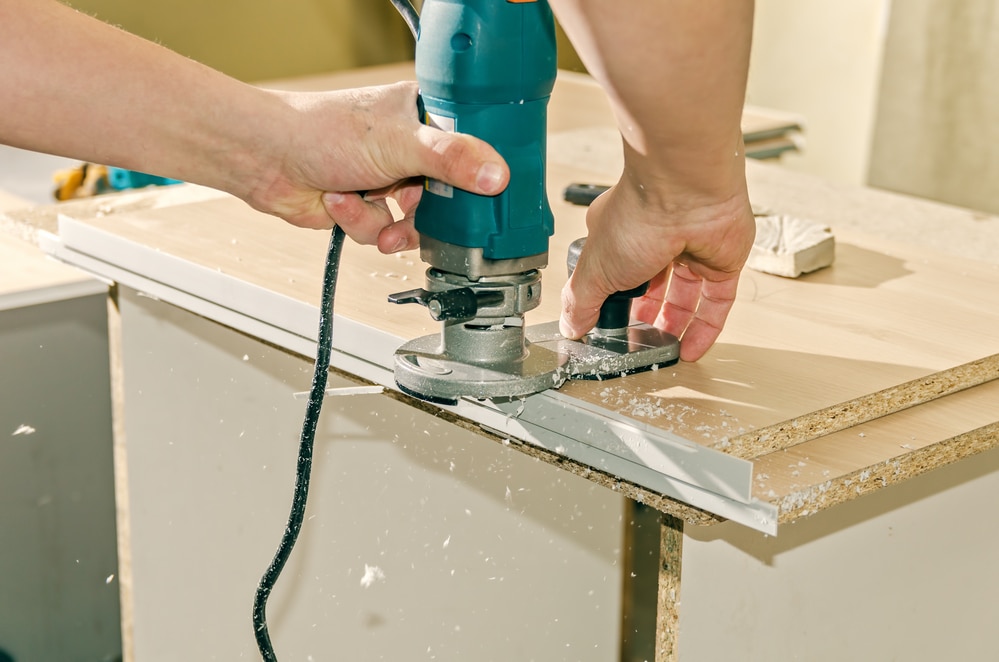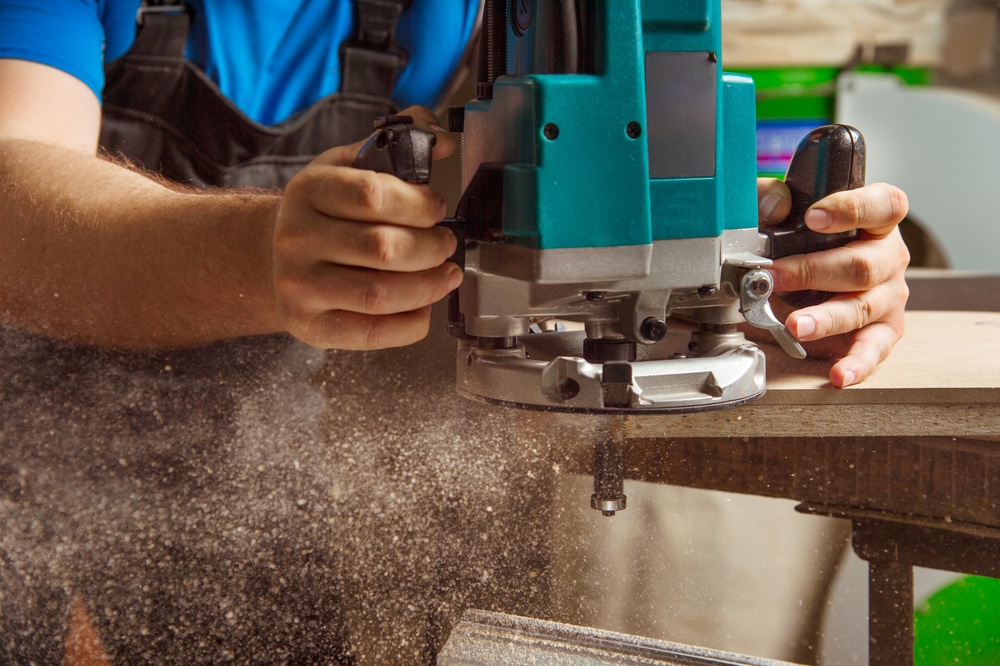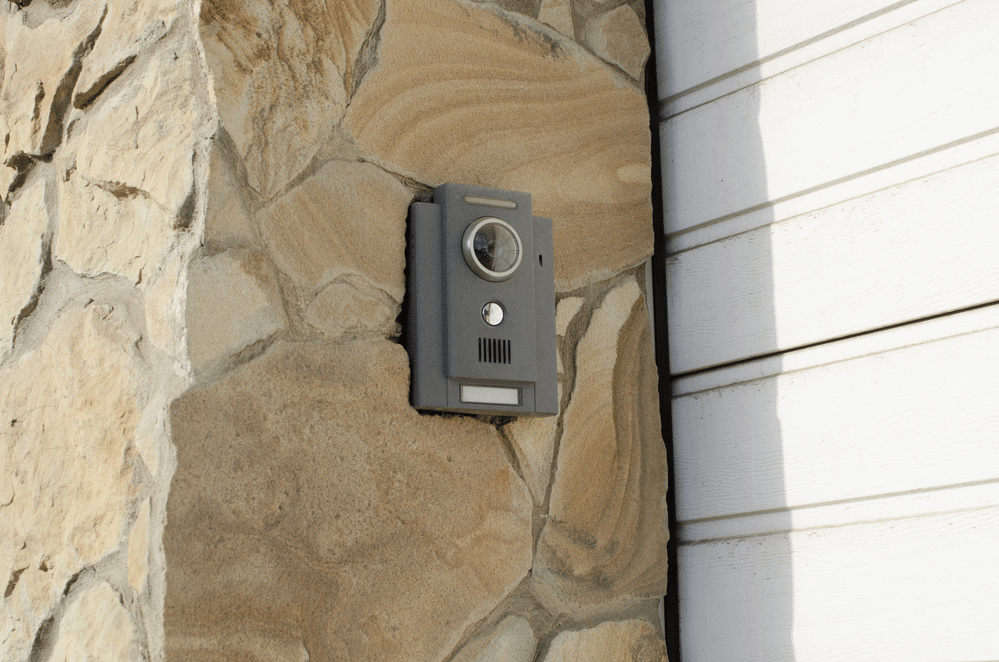Last Updated on
Palm routers are small handheld tools that are one of the most versatile woodworking tools. They often have a plunge base that allows you to make plunge cuts on material, and woodworkers can also use them with fixed bases if they want to do other types of routing.
The question that many people have is: how deep can a palm router cut? This article will explore this topic in more detail and explain some things that affect the cutting depth of your device.
Palm Routers and Their Features
A palm router is a small router that you can use for plunge cuts or other types of routing. They are often cordless, which makes them easier to use than a corded model. Some models also come with variable speed controls, which allow you to adjust the motor speed depending on the type of material you are working with.
Because of their portability and accuracy, routers are ideal for smaller or more detailed jobs like cutting ornamental moulding, engraving, rounding, and beveling.
A trim router is not the same as a palm router, although they are both smaller than standard routers built into a router table. A Dremel multi-tool attachment converts the small machine into a tool capable of routing circles and cutting letters. But for our purposes, we will be discussing routers with drill bits.
Router Cutting Depth
You may modify the depth of a cut made by a router by adjusting the height of the router’s cutter, also known as a bit.
In some cases, you must cut to a specific depth. Still, it must be accomplished by the drill bit making a series of very light cuts, each removing just a tiny amount of wood chips.
By altering the height of the cutter, you can change how much material is taken off with each pass.
When using a handheld router, “height” is the distance the cutter extends below the base plate; when using a router table, it is the distance the cutter rises over the top of the table.
The form of the cut can also be modified by adjusting the bit’s height relative to the material. Changing the height of a surface-cutting (non-pilot) cutter, such as a round over or V-groove bit, allows for various cut profiles.
You can make a groove with a flat bottom, rounded edges, or rounded edges that straighten out at the top by changing the height of a round-over bit, for instance.
When using a fixed-base router, the depth of the cut is adjusted to the desired depth and left there for the duration of the cut.
You may adjust the height of the cutter on a plunge router by using the router’s depth stop, which you should calibrate for precise adjustments. You may limit the amount the router can travel with each plunge and secure it in any position.
Some plunge routers have a turret stop with three settings, allowing you to easily switch between three cutting depths. A fine adjuster is optional for more precise cutter adjustments on professional-grade routers.
How to Change Plunge Router Depth
When routing deep cuts, it is best practice to make a series of shallow passes to increase the cut’s depth gradually. This will reduce the router’s motor and the cutter’s workload, resulting in cleaner cuts.
Set the Height of the Router Cutter
To set the height of your router bit:
- Ensure the router is unplugged and the power switch is turned off.
- Holding the workpiece steady, position the router on its surface, and plunge it down until the cutter makes contact.
- Release the depth stop, then lower it until it lands on the stop underneath it.
One of the three turret stops is often used as a stop.
Set Depth of Router Cutter

Next, adjust the plunge depth by moving the depth stop up or down. When cutting precise hinge mortises, you may place a piece of material (such as a hinge leaf) between the depth stop rod and the stop to ensure that you get the desired depth of cut.
You can set the maximum plunge depth by locking the depth stop. This is the maximum depth at which you may secure the router, although you can do it at any point during the plunge.
Position Turret Stop on a Router
Some routers have a turret with three stops to change depth in three places. This is helpful when making deep cuts over and over with successive cuts or cuts of different depths on the same piece of work. While cutting, you can easily adjust the depth.
You can alter the turret stops’ height by releasing their locking nuts, adjusting the screws up or down, and then retightening the nuts.
The depth of the cut is determined by the vertical distance from the bottom of the depth stop rod to the top of the turret stop. To adjust each turret, turn the stop around.
Set the bottom screw to the depth of cut you want or the full depth you need, whichever is less. If you prefer gradual changes, you can set the other stops to the same increments. Routers have turret stops that allow for variable cutting depths.
Use the Three-Position Turret Stop
After the turret stop heights have been selected, plunge router cutting may begin. You can quickly change between turrets thanks to the rotating stops. Start at the highest turret stop if you want to make a series of progressively smaller cuts.
When making multiple passes, turn the turret to the next highest stop, and turn it to the lowest one when making the final pass.
Bit Types
Router bits come in various shapes and sizes, and each type has a specific purpose. Following are some common bit types and how to use them.
Straight Router Bits
A straight router bit is the most commonly used router bit type. Bits with a straight shank are ideal for making straight cuts into a material, such as when making a dado, a groove, an inlay, or a mortise.
Commonly used diameters for straight bits vary from 3/16 inch to 1-and-a-half inch.
Spiral Bits
A spiral bit is similar to drill bits in design, allowing them to do plunge cuts and shallow passes relatively quickly. Because a straight bit’s blades don’t overlap, you risk burning the wood rather than cutting it if you plunge it deeper than 3/32.
Down Cut Router Bit
A down-shear bit, in contrast to a straight-fluted bit, cuts downwards into the upper surface of the material, producing a clean, chip- and fuzz-free straight edge.
However, you may also use an up-cut bit to leave a neat edge on the underside of the material, although this is a less common application for up-cut bits.
Changing Router Bits
Both boys are gone for the night so naturally I'm on Twitter and hubs is changing the bits in his router.
— Housy Wife (@wife_housy) January 31, 2016
You’ll need two wrenches when removing the old bit. The other one is required to steady the router’s shaft while you unscrew it. A locking nut is turned tightly with one wrench while another holds the shaft.
The shank is the bottom cylindrical portion of the router bit that fits into the collet. While its length may vary from bit to bit, it is usually built to be long enough to firmly attach the router bit to the router. The most typical shank widths are 1/2 inch and 1/4 inch.
Avoid Burning Bits
Reduce router speed and increase feed rate to prevent burn marks. The toughest woods can be easily routed with high-powered routers and carbide-tipped bits. This, however, stresses the bit, resulting in tear-out and burning.
Palm Router: Powerful and Compact Tool You Need
Hardwoods, plastics, and even metals are no match for handheld routers’ precision. These devices are a valuable addition to any toolbox because you can use them in many different ways.
Different types of plunge depths vary from 2 to 3.5 inches, although the final depth might only sometimes correspond to a realistic working depth below the router base plate.
Paul is the type of person who never met a problem he couldn’t fix. He can always be found tinkering with something in his house, even if it isn’t broken! His tips and tricks are often shared on our site. He’s the one you call when something breaks because he has been known to improvise fixes for everything from leaky faucets to malfunctioning dryers.



